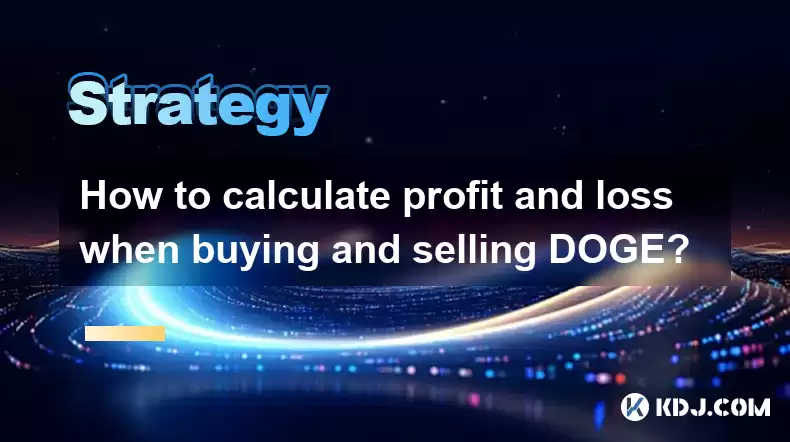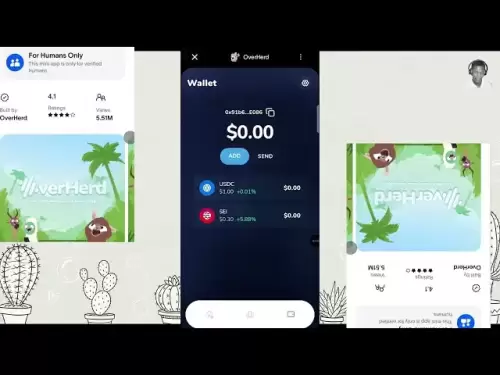-
 Bitcoin
Bitcoin $114200
0.00% -
 Ethereum
Ethereum $3637
0.56% -
 XRP
XRP $2.950
-2.01% -
 Tether USDt
Tether USDt $0.9999
0.02% -
 BNB
BNB $761.0
0.55% -
 Solana
Solana $164.1
-1.38% -
 USDC
USDC $0.9999
0.02% -
 TRON
TRON $0.3332
0.36% -
 Dogecoin
Dogecoin $0.2012
-0.52% -
 Cardano
Cardano $0.7261
-1.41% -
 Hyperliquid
Hyperliquid $37.62
-2.13% -
 Stellar
Stellar $0.3930
-2.65% -
 Sui
Sui $3.441
-0.16% -
 Bitcoin Cash
Bitcoin Cash $563.8
0.70% -
 Chainlink
Chainlink $16.50
0.09% -
 Hedera
Hedera $0.2424
-0.14% -
 Ethena USDe
Ethena USDe $1.001
0.01% -
 Avalanche
Avalanche $22.20
0.00% -
 Litecoin
Litecoin $118.0
-2.48% -
 UNUS SED LEO
UNUS SED LEO $8.991
0.12% -
 Toncoin
Toncoin $3.195
-3.87% -
 Shiba Inu
Shiba Inu $0.00001217
0.12% -
 Uniswap
Uniswap $9.674
-0.21% -
 Polkadot
Polkadot $3.633
1.00% -
 Monero
Monero $295.3
-0.82% -
 Dai
Dai $0.9999
0.00% -
 Bitget Token
Bitget Token $4.321
-0.41% -
 Cronos
Cronos $0.1392
0.73% -
 Pepe
Pepe $0.00001027
-0.89% -
 Aave
Aave $258.5
0.32%
How to calculate profit and loss when buying and selling Doge?
To calculate profit on DOGE, use: Profit = Selling Price - Buying Price; for loss, use: Loss = Buying Price - Selling Price, and don't forget transaction fees.
Apr 21, 2025 at 05:49 am

When it comes to trading cryptocurrencies like Dogecoin (DOGE), understanding how to calculate profit and loss is crucial for making informed investment decisions. This article will guide you through the process of calculating your gains or losses when buying and selling DOGE, ensuring that you have a clear understanding of your investment performance.
Understanding the Basics of Profit and Loss
Before diving into the specifics of calculating profit and loss with DOGE, it's important to understand the basic concepts. Profit is the amount of money you gain when you sell a cryptocurrency for more than you paid for it. Conversely, loss is the amount of money you lose when you sell a cryptocurrency for less than you paid for it. These calculations are fundamental to managing your cryptocurrency portfolio effectively.
Calculating Profit on DOGE
To calculate the profit on a DOGE transaction, you need to follow a simple formula. The formula for profit is:
Profit = Selling Price - Buying Price
Let's say you bought 100 DOGE at a price of $0.10 per DOGE, and later sold those 100 DOGE at a price of $0.15 per DOGE. Here's how you would calculate your profit:
- Buying Price: 100 DOGE $0.10 = $10
- Selling Price: 100 DOGE $0.15 = $15
- Profit: $15 - $10 = $5
In this example, you would have made a profit of $5.
Calculating Loss on DOGE
Similarly, to calculate the loss on a DOGE transaction, you use the same formula but with a different outcome. The formula for loss is:
Loss = Buying Price - Selling Price
Let's say you bought 100 DOGE at a price of $0.15 per DOGE, but later sold those 100 DOGE at a price of $0.10 per DOGE. Here's how you would calculate your loss:
- Buying Price: 100 DOGE $0.15 = $15
- Selling Price: 100 DOGE $0.10 = $10
- Loss: $15 - $10 = $5
In this example, you would have incurred a loss of $5.
Calculating Percentage Profit and Loss
Understanding the percentage of profit or loss can provide a clearer picture of your investment performance. The formulas for calculating percentage profit and loss are as follows:
- Percentage Profit = (Profit / Buying Price) 100
- Percentage Loss = (Loss / Buying Price) 100
Using the profit example from earlier:
- Profit: $5
- Buying Price: $10
- Percentage Profit: ($5 / $10) 100 = 50%
Using the loss example from earlier:
- Loss: $5
- Buying Price: $15
- Percentage Loss: ($5 / $15) 100 ≈ 33.33%
These percentages help you understand the relative performance of your DOGE investments.
Considering Transaction Fees
When calculating profit and loss, it's important to consider transaction fees, as they can significantly impact your net gains or losses. Most cryptocurrency exchanges charge a fee for buying and selling cryptocurrencies. Here's how you would incorporate transaction fees into your calculations:
- Buying Fee: Let's say the buying fee is 0.5%. For the earlier example, the buying fee on $10 would be $10 * 0.005 = $0.05.
- Selling Fee: Let's say the selling fee is also 0.5%. For the earlier example, the selling fee on $15 would be $15 * 0.005 = $0.075.
Revising the profit calculation with fees:
- Total Cost (Buying Price + Buying Fee): $10 + $0.05 = $10.05
- Total Revenue (Selling Price - Selling Fee): $15 - $0.075 = $14.925
- Profit with Fees: $14.925 - $10.05 = $4.875
Revising the loss calculation with fees:
- Total Cost (Buying Price + Buying Fee): $15 + $0.075 = $15.075
- Total Revenue (Selling Price - Selling Fee): $10 - $0.05 = $9.95
- Loss with Fees: $15.075 - $9.95 = $5.125
Including transaction fees gives you a more accurate picture of your actual profit or loss.
Using a Crypto Calculator
While manual calculations can be done, using a cryptocurrency profit and loss calculator can simplify the process and reduce the chance of errors. Here are the steps to use a crypto calculator:
- Choose a reliable crypto calculator: There are many online tools available, such as CoinMarketCap's calculator or other dedicated crypto calculators.
- Enter your buying details: Input the amount of DOGE you bought, the price you paid per DOGE, and any associated fees.
- Enter your selling details: Input the amount of DOGE you sold, the price you sold per DOGE, and any associated fees.
- Calculate: The calculator will then compute your profit or loss, including the percentage.
Using a calculator can be especially helpful if you're dealing with multiple transactions or complex fee structures.
Tracking Your DOGE Investments
To effectively calculate profit and loss over time, it's essential to keep accurate records of your DOGE transactions. Here are some tips for tracking your investments:
- Use a spreadsheet: Create a spreadsheet where you log each transaction, including the date, amount of DOGE bought or sold, price per DOGE, and any fees.
- Utilize crypto portfolio trackers: Apps like Blockfolio or Delta can automatically track your transactions and calculate your profit and loss in real-time.
- Regularly review your portfolio: Periodically assess your DOGE holdings and transactions to stay on top of your investment performance.
Accurate tracking ensures that you have all the necessary data to calculate your profit and loss accurately.
Frequently Asked Questions
Q: How do I account for multiple transactions when calculating profit and loss on DOGE?
A: When dealing with multiple transactions, you need to calculate the profit or loss for each transaction separately and then sum them up. For example, if you bought DOGE at different times and prices, you would calculate the profit or loss for each batch of DOGE sold. You can use a spreadsheet or a crypto portfolio tracker to manage this complexity.
Q: Can I use the same method to calculate profit and loss for other cryptocurrencies?
A: Yes, the method described for calculating profit and loss on DOGE can be applied to any other cryptocurrency. The key is to use the buying and selling prices, along with any associated fees, to determine your gains or losses.
Q: What should I do if the price of DOGE fluctuates significantly before I sell?
A: If the price of DOGE fluctuates significantly before you sell, you should still use the actual buying and selling prices in your calculations. However, you might want to consider setting stop-loss or take-profit orders to manage your risk and lock in profits or minimize losses based on your investment strategy.
Q: How can I minimize the impact of transaction fees on my DOGE profits?
A: To minimize the impact of transaction fees, consider the following strategies: trade on exchanges with lower fees, use limit orders to control the price at which you buy or sell, and consolidate smaller transactions into larger ones to reduce the proportional impact of fees. Additionally, some exchanges offer fee discounts for using their native tokens or for high-volume trading.
Disclaimer:info@kdj.com
The information provided is not trading advice. kdj.com does not assume any responsibility for any investments made based on the information provided in this article. Cryptocurrencies are highly volatile and it is highly recommended that you invest with caution after thorough research!
If you believe that the content used on this website infringes your copyright, please contact us immediately (info@kdj.com) and we will delete it promptly.
- EIP-7999: Ethereum's Fee Fixer-Upper – Is This the End of Gas Fee Nightmares?
- 2025-08-06 15:10:22
- Ethereum Withdrawals, Institutional Confidence, and a Potential Price Rally: Decoding the Signals
- 2025-08-06 15:30:12
- Ethereum Reform: EIP-7999 and the Quest for Fee-less Crypto?
- 2025-08-06 15:30:12
- XRP, MAGACOIN FINANCE, and Ethereum: What's Hot in the Crypto World?
- 2025-08-06 15:35:12
- Unilabs, Ethereum, and Dogecoin: Navigating the Crypto Landscape
- 2025-08-06 15:35:12
- ETH, BTC, XRP: Navigating Crypto Volatility and Spotting the Next Big Thing
- 2025-08-06 15:40:11
Related knowledge

How to avoid common crypto investment mistakes?
Jul 13,2025 at 01:35am
Understanding the Risks of Crypto InvestmentInvesting in cryptocurrency can be highly rewarding, but it also comes with significant risks. One of the ...

What is a long-short crypto strategy?
Jul 15,2025 at 10:56am
Understanding the Basics of a Long-Short Crypto StrategyA long-short crypto strategy is an investment approach where traders simultaneously take long ...

What is a long-short crypto strategy?
Jul 11,2025 at 01:28pm
Understanding the Basics of Long-Short Crypto StrategyA long-short crypto strategy is an investment approach where traders take both long and short po...

How to use the RSI indicator for crypto?
Jul 12,2025 at 03:56pm
Understanding the RSI Indicator in Cryptocurrency TradingThe Relative Strength Index (RSI) is a momentum oscillator used to measure the speed and chan...

Is copy trading a good strategy for crypto beginners?
Jul 12,2025 at 08:28am
Understanding Copy Trading in the Cryptocurrency MarketCopy trading is a strategy where novice traders replicate the trades of experienced investors a...

How to build a crypto portfolio with $1000?
Jul 13,2025 at 08:14pm
Understanding the Basics of Cryptocurrency InvestmentBuilding a crypto portfolio with $1000 starts with understanding the fundamentals of cryptocurren...

How to avoid common crypto investment mistakes?
Jul 13,2025 at 01:35am
Understanding the Risks of Crypto InvestmentInvesting in cryptocurrency can be highly rewarding, but it also comes with significant risks. One of the ...

What is a long-short crypto strategy?
Jul 15,2025 at 10:56am
Understanding the Basics of a Long-Short Crypto StrategyA long-short crypto strategy is an investment approach where traders simultaneously take long ...

What is a long-short crypto strategy?
Jul 11,2025 at 01:28pm
Understanding the Basics of Long-Short Crypto StrategyA long-short crypto strategy is an investment approach where traders take both long and short po...

How to use the RSI indicator for crypto?
Jul 12,2025 at 03:56pm
Understanding the RSI Indicator in Cryptocurrency TradingThe Relative Strength Index (RSI) is a momentum oscillator used to measure the speed and chan...

Is copy trading a good strategy for crypto beginners?
Jul 12,2025 at 08:28am
Understanding Copy Trading in the Cryptocurrency MarketCopy trading is a strategy where novice traders replicate the trades of experienced investors a...

How to build a crypto portfolio with $1000?
Jul 13,2025 at 08:14pm
Understanding the Basics of Cryptocurrency InvestmentBuilding a crypto portfolio with $1000 starts with understanding the fundamentals of cryptocurren...
See all articles

























































































